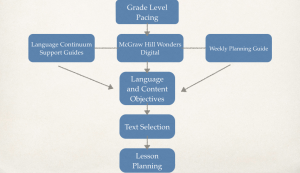As part of the cultural proficiency journey, teachers at Lincoln High attended period staff meetings throughout the day on November 12, 2014. One focus was second language acquisition and how to support the ELL students (levels 1-5) and the students who have a home language other than English. We discussed input (receptive language) and output (productive language) and how to support students at any given proficiency level. We shared some ideas of strategies to support these students and allowable accommodations. To see the presentation, click here.
Strategies and Accommodations Shared by Staff
illustrated directions-many photos of process
directions given orally and on the board
speak slower and check for understanding
enunciate clearly
demonstrations (modeling)
show videos to promote understanding
use nonverbal cues, gestures
word walls
word banks
notes with visuals and drawing options
small groups, pairs (sometimes with same language, sometimes with English-speaking peer models), preferential seating
provide extra help, one-on-one support
extended time
shorten assignments, provide alternative assignments and assessments
have students translate words in their language
use bilingual/picture dictionaries, Google Translate (for vocabulary and simple phrases), dictionary phone apps
encourage students to access resources online
text on tape, listen to reading
use sentence starters/frames
use graphic organizers
use rewordify.com
have students present a speech in their native language, followed by English (grade the presentation -Native, the content -English)
use cooperative learning strategies
encourage self-advocacy skills
contact bilingual liaisons-make sure that I make the first phone call home
learn about the different cultures
use ISELL


